
9th October 2018
The New Google Ads Interface – Six Months On
As of last week, 4th October 2018 to be precise, Google officially retired the traditional Google AdWords Interface. The new Google Ads experience became the only way to manage Google Ads accounts.
This has been a long time coming, and Google themselves have pushed the old interface’s retirement back from initial dates to give users enough warning and encouragement to move over to the new experience.
We wrote about the introduction of the new Google Ads experience back in April, and given the news about the old interface’s retirement we felt it would be nice to write a follow up on our own experiences six months on.
Speaking from personal experience, I wasn’t using the new Google Ads experience six months ago - I had to be dragged out of the “old” interface kicking and screaming. It’s the setup I was using when I learned PPC four years ago, and it’s all I’ve ever known. Every menu, setting and filter became a reflex. Any attempts at the bottom of the screen to entice me into the new experience were met with the coldest of shoulders.
Eventually though, I began forcing myself into using it – motivated by Google’s commitment to doing away with the traditional interface. Google inadvertently encouraged users to move to the new interface by limiting features such as removing functionality for customised columns in the old interface. Promotion extensions and Showcase Shopping Ads were also exclusive to the new Google Ads experience – it reached a point where you were missing out on key benefits by remaining in the old interface.
I’ve been working exclusively in the new Google Ads interface for a few months now and it’s growing on me, even if it’s not “perfect” yet. In this blog I’ll tell you what I like and dislike about the new Google Ads experience.
Like - Keyboard Shortcuts
Ironically, the reason I love the shortcuts feature is the same reason that I avoided Google Ads for so long.
I don’t want to have to think about the structure or navigation of the accounts, I just want to focus on the data in front of me. If I can have a set structure where I know where every setting and button is, I can go into auto-pilot and spend more time analysing the performance of the accounts.
After a few teething issues with the new Google Ads experience, I’m there now. However, when I’m stuck on where a setting is, or just need to find it quickly, I know I can rely on the keyboard shortcuts.
Typing “GC” takes me back to the campaigns page, regardless of which page I’m on in Google Ads. This is typically my “homepage” for accounts, so it’s my most used shortcut. For anything else, typing “GT” brings up a handy search box in which I can type the page or setting I need to access. Google then lists it for me, and sometimes provides a keyboard shortcut for that page too.
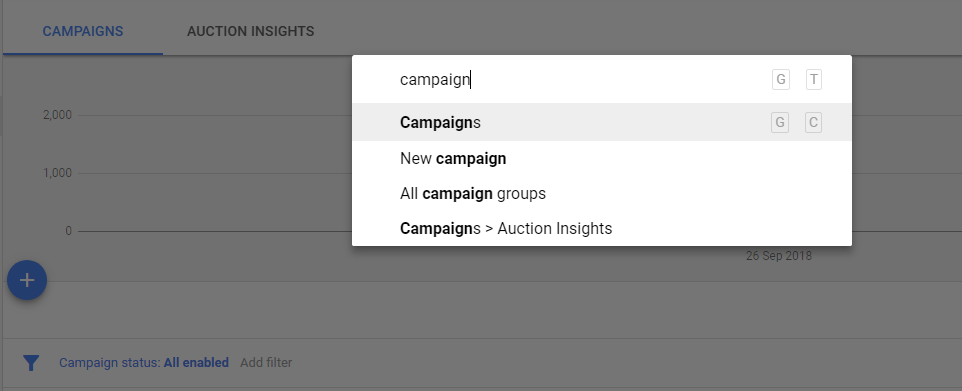
Like - Date Options
A simple yet brilliant addition is the back and forth arrows on dates. Whilst the date options in general have had a nice refresh in Google Ads:
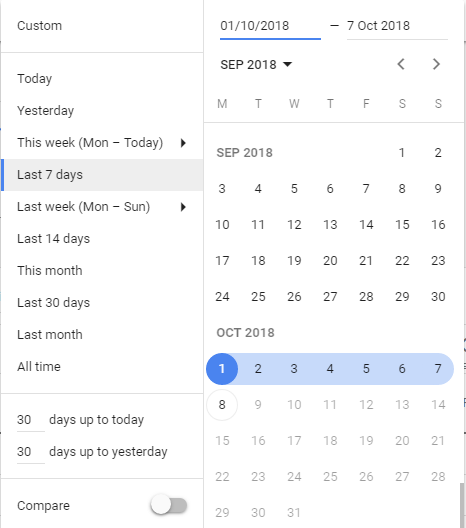
It’s the simple arrows that do the job for me. This feature allows me to scroll back and forth rather than manually selecting each day in the calendar view.

It sounds mad, but it’s made my life so much easier in Google Ads.
Like - Filtered Predefined Reports
Google has done away with Dimensions as a tab, but their replacement is just as good – if not a little better. Predefined reports sit in the “Reports” section at the top of your Google Ads view, and contain all the old Dimensions views alongside a few new options such as Shop Visits, Extension data and YouTube search terms.
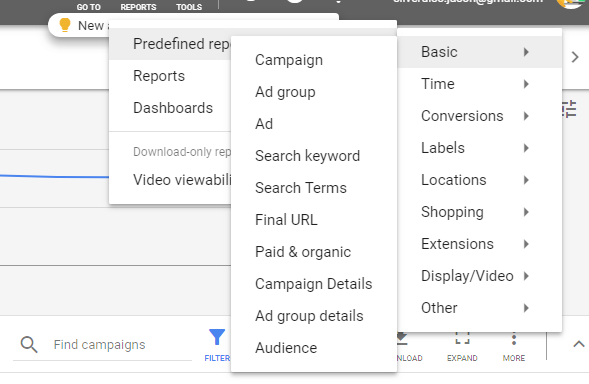
When working in a report, adding filters quickly and easily to break data down by campaign type or specific campaigns and ad groups is extremely useful. I’m able to use a variety of filters to see data by campaign. My favourite use of this is selecting multiple campaigns via a tick list and viewing their combined performance in isolation by day, week and month. It gives me the kind of data flexibility that I sorely need in the accounts and handles it with ease.
What if I need to review these areas more often? Well I can save my view as a report and access it anytime under the “Reports” dropdown.
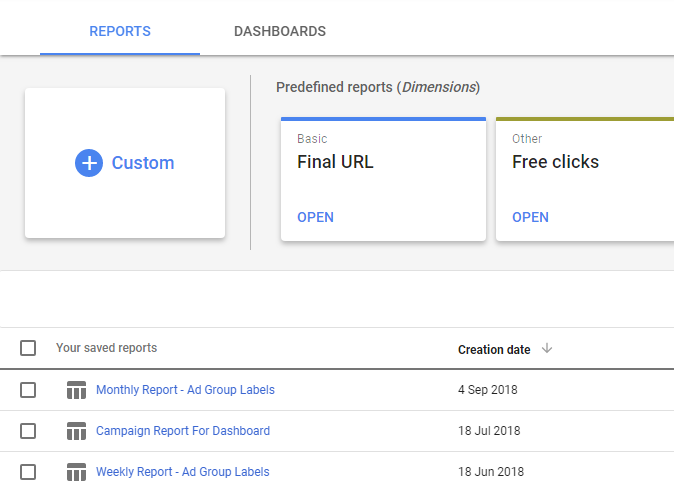
Suddenly, weekly and monthly reports are set up and ready to download in the exact way I need them – saving me both time and effort.
Dislike - Keyword Planner
Previously, the default view for keyword planner results would show search volume data right away, which was perfect. I need insight into whether my planned keywords are going to generate volume in my account, and Keyword Planner could provide this right away. Now however, the default view throws you straight into performance predictions:

This is a nice feature, but I don’t like it being my default view. I’m not at the stage of deciding if I want the keywords yet, let alone my bids and budgets for the terms! When I’m looking for search volume and forecasts, it’s largely to understand the average monthly searches generated by the keywords. This is handled in one of the later tabs:

My other pain point with the keyword planner is how the grouping of keywords into “similar terms” is done automatically – and not always well. I searched for marketing services, yet here are search volumes for service marketing – this isn’t my keyword. Should it be? Possibly, but what is the search volume for marketing services as a term?
I’ve had a scenario before where finance terms became financial, giving the phrase an entirely different meaning. It’s very frustrating when assessing a structured keyword list at scale.
Dislike - Auto-Tagging Settings Hard To Find
Enabling Auto-Tagging is something I do as a priority whenever I build an account, and it’s also the first thing I check when I’m taking over an existing PPC account. I need to be sure that we’re tracking actions properly – especially when I’m viewing Paid Search data in Google Analytics.
Traditionally, auto-tagging was kept in the “Account Settings” section under Tools. Now, it’s moved the “Settings” option, in which you have to switch from Campaign Settings to Account Settings at the top tabs to see auto-tagging features. It took me far too long to find this setting, and it could’ve led to a disaster when launching my first account in the new interface.
Then, I remembered to use the G-T shortcut and searched for Account Settings, which got me there. It wasn’t a crisis, just a minor gripe.
Dislike - Smart Display Campaign Columns
I have very specific columns set up for Display Campaigns, which rarely change from account to account.
In my Smart Display campaigns, Conversions and Cost / Conv. Columns are a necessity – which I agree with. What I don’t agree with is being unable to change the order of these columns, and Google insisting on putting them at the start of my data columns by default:
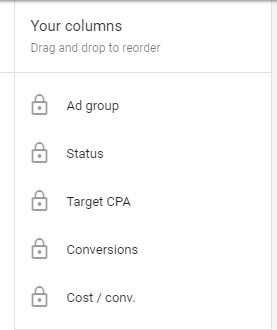
By all means make them required columns but let me decide the order!
So there you have it - whilst the new interface isn’t yet perfect in my eyes, it’s a step in the right direction. As a previous sceptic of the new Google Ads experience, I’m thoroughly enjoying it and I’m sure you will do.
Of course, if you want the hassle taken out of PPC account management you’re welcome to give our friendly PPC specialists a call on 015316 316100 or contact us online today.






